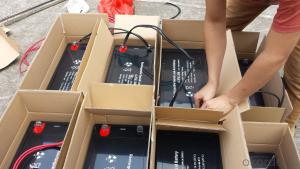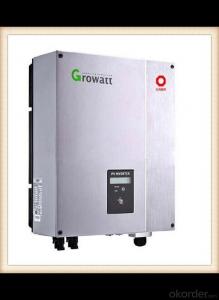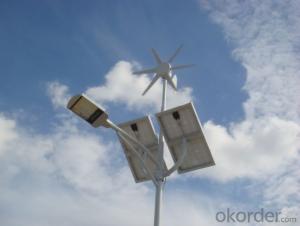Hybrid Solar Inverter Diagram
Hybrid Solar Inverter Diagram Related Searches
Canopy For Solar Inverter Awning For Solar Inverter Solar Inverter For Rv Inverter For Solar Quality Solar Inverter Best Solar Inverter In Kerala Top Solar Inverter In Pakistan Plug In Solar Inverter Solar Inverter In Pakistan Spd In Solar InverterHot Searches
Type Of Inverter For Solar Types Of Inverter For Solar Used Solar Inverter For Sale Inverter Size For Solar System Solar Edge Inverter For Sale 5kw Solar Inverter For Sale Solar Inverter For Sale Solar Inverter For Battery Solar Inverter For Split Ac Solar Inverter For Laptop Solar Inverter For Fridge Solar With Inverter Price Solar Inverter With 2 Battery Solar Inverter With Ac Outlet Solar Inverter Price In China Best Solar Inverter In China Solar Inverter Price In Dubai Solar Inverter Price In Uae Solar Inverter Price In Kenya Solar Inverter For FridgeHybrid Solar Inverter Diagram Supplier & Manufacturer from China
Okorder.com is a professional Hybrid Solar Inverter Diagram supplier & manufacturer, offers integrated one-stop services including real-time quoting and online cargo tracking. We are funded by CNBM Group, a Fortune 500 enterprise and the largest Hybrid Solar Inverter Diagram firm in China.Hot Products
FAQ
- The main difference between an on-grid and off-grid solar inverter lies in their functionality and purpose. An on-grid solar inverter is designed to convert the direct current (DC) electricity generated by solar panels into alternating current (AC) electricity that can be fed into the electrical grid. This type of inverter is used in grid-tied solar systems, where excess energy can be sold back to the utility company, allowing homeowners to benefit financially. On the other hand, an off-grid solar inverter is used in standalone solar systems that are not connected to the electrical grid. It is responsible for converting the DC electricity produced by solar panels into AC electricity suitable for powering off-grid appliances and storing energy in batteries. Off-grid inverters often include additional features like battery charging and management to ensure reliable power supply in the absence of grid connection. In summary, while both on-grid and off-grid solar inverters convert DC to AC electricity, their purposes differ significantly. On-grid inverters enable homeowners to utilize the grid as a power storage and distribution system, while off-grid inverters are essential for self-sustaining solar systems that operate independently of the grid.
- A solar inverter plays a crucial role in the overall system performance of a solar energy system in different weather conditions. In sunny weather, the solar inverter efficiently converts the direct current (DC) generated by the solar panels into alternating current (AC), optimizing power output. However, in cloudy or overcast conditions, the solar inverter mitigates the impact of reduced sunlight by employing maximum power point tracking (MPPT) technology, ensuring that the system operates at its peak efficiency and extracts the maximum available energy from the panels. Additionally, advanced inverters can also provide grid stabilization during extreme weather events, such as storms or voltage fluctuations, safeguarding the system and enhancing its performance and reliability. Overall, a well-functioning solar inverter is essential for maximizing energy production and maintaining optimal system performance in varying weather conditions.
- A solar inverter plays a crucial role in ensuring the overall system reliability of a solar power system. It converts the direct current (DC) generated by solar panels into alternating current (AC) that is suitable for use in homes or businesses. By efficiently converting the energy and maintaining optimal voltage and frequency levels, the inverter ensures that the system operates reliably and consistently. It also provides various protective functions, such as monitoring and controlling the system's performance, detecting faults or abnormalities, and shutting down the system in case of emergencies. Therefore, a well-functioning solar inverter significantly impacts the overall system reliability by maximizing energy production, preventing damage, and ensuring smooth operation.
- No, a solar inverter cannot be used with a string inverter system. Solar inverters and string inverters are two different types of inverters that serve different functions in a solar power system. A solar inverter is designed to convert the DC power generated by solar panels into AC power for use in homes or businesses. On the other hand, a string inverter is used to convert the DC power generated by multiple solar panels connected in series, known as a string, into AC power. Therefore, these two types of inverters are not compatible with each other.
- No, a solar inverter cannot be used with solar-powered water heaters as they operate on different principles. Solar inverters are designed to convert the direct current (DC) generated by solar panels into alternating current (AC) for use in residential or commercial electrical systems. On the other hand, solar-powered water heaters use sunlight directly to heat water, without the need for converting DC to AC. Therefore, these two systems are not compatible with each other.
- The role of a grid connection feature in a solar inverter is to enable the solar energy system to connect to the electricity grid. It allows for the transfer of excess energy generated by the solar panels back to the grid, thereby allowing the system to sell the surplus electricity or receive credits for it. Additionally, it ensures that the solar energy system can draw electricity from the grid when solar production is insufficient, ensuring a continuous and reliable power supply.
- No, a solar inverter cannot be used for both grid-tied and off-grid systems. Grid-tied inverters are designed to convert solar energy into electricity and feed it back into the grid, while off-grid inverters are designed to convert solar energy into usable electricity for standalone systems not connected to the grid. The requirements and functionalities of both types of systems are different, so separate inverters are needed for each.
- A solar inverter handles voltage fluctuations from the battery bank by utilizing its built-in voltage regulation and control mechanisms. When the battery bank's voltage fluctuates, the solar inverter adjusts its output voltage accordingly to maintain a stable and consistent power supply. This ensures that the electricity generated from the solar panels is converted efficiently and effectively, regardless of any voltage variations from the battery bank.













































